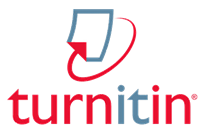Analisis Penataan Arsip Dinamis Berbasis Digital di Universitas Negeri Semarang
 ), Ahmad Saeroji(2), Dwi Untung Prakosa(3), Yuniar Kurniati(4), Ismiyati Ismiyati(5), Mar'atus Sholikah(6),
), Ahmad Saeroji(2), Dwi Untung Prakosa(3), Yuniar Kurniati(4), Ismiyati Ismiyati(5), Mar'atus Sholikah(6), (1) Universitas Negeri Semarang
(2) Universitas Negeri Semarang
(3) Universitas Negeri Semarang
(4) Universitas Negeri Semarang
(5) Universitas Negeri Semarang
(6) Universitas Negeri Semarang
 Corresponding Author
Corresponding Author
Copyright (c) 2022 Djoko Legowo, Ahmad Saeroji, Dwi Untung Prakosa, Yuniar Kurniati, Ismayati Ismayati, Mar'atus Sholikah
DOI : https://doi.org/10.24036/116218-0934
Full Text:
 Language : Indonesia
Language : Indonesia
Abstract
This study aims to determine the dynamic archive management carried out digitally by the work unit of the Faculty of Economics, State University of Semarang (UNNES). This study uses a qualitative descriptive with an interactive model. Data analysis starts from data reduction, data presentation, and drawing conclusions. Research informants are employees who manage dynamic archives in the work unit of the Faculty of Economics, UNNES who were selected using the snowball sampling technique. The findings of this study explain that the process of organizing digital-based archives is still in the planning and testing stages. In structuring digital archives, there are three stages, namely filing, borrowing, and destroying archives. Although, the work unit of the Faculty of Economics, UNNES, has conducted trials of digital-based structuring, the archive file process still uses a manual system. Next, the archive lending stage, if there are borrowers from external parties, they must fill in the digital archive system menu. This is so that the status of the archive can be known easily whether the archive is available or still borrowed. The third stage is the destruction of the archive. The work unit of the Faculty of Economics has carried out the destruction according to a predetermined archive retention schedule. Thus, the development of digital-based archive arrangement is very much needed by the work unit so that the archive arrangement process can be more effective and efficient in providing services to the academic community, especially during the COVID-19 pandemic.
Keywords
 Article Metrics
Article Metrics
 Abstract Views : 938 times
Abstract Views : 938 times
 PDF Downloaded : 448 times
PDF Downloaded : 448 times
Refbacks
- There are currently no refbacks.
Copyright (c) 2022 Djoko Legowo, Ahmad Saeroji, Dwi Untung Prakosa, Yuniar Kurniati, Ismayati Ismayati, Mar'atus Sholikah




